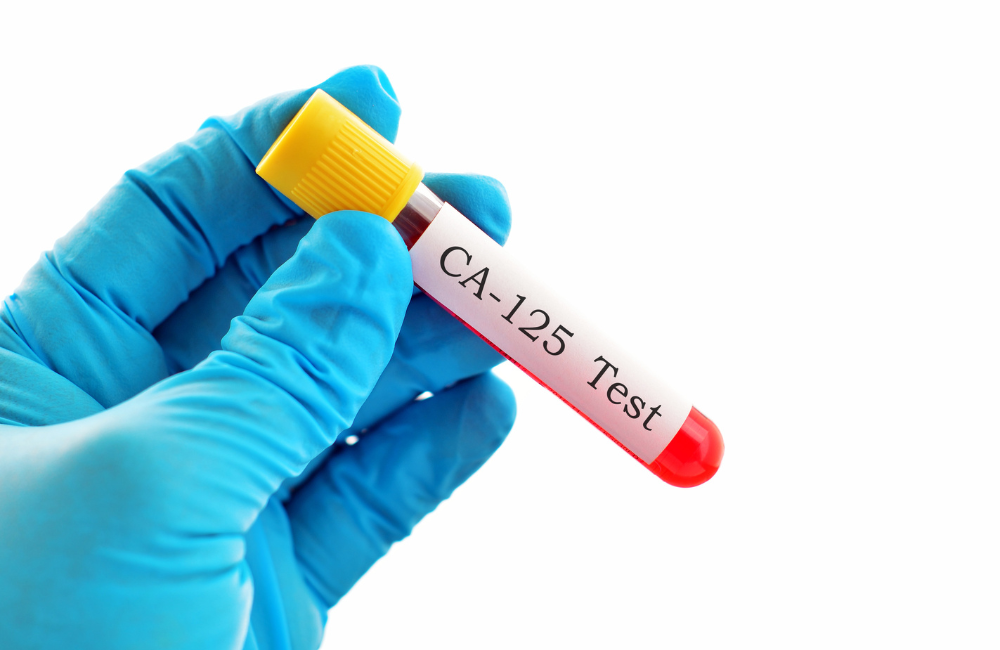
Understanding CA-125 Test: Uses & Procedure
Overview
Are you curious about the CA-125 test? It’s like a health detective, offering insights into your body’s intricacies. Let’s dive into this diagnostic tool, unpacking its purpose, functionality, and everything you need to know to take charge of your health.
QUICK LINKS:
What it is
How it works
The test involves a simple blood draw where a healthcare professional collects a blood sample from your arm. The sample undergoes laboratory analysis to measure CA-125 levels. Elevated levels might prompt further investigations or monitoring.
Symptoms
CA-125 isn’t a symptom per se but a tool to aid in diagnosis. However, symptoms that might prompt a CA-125 test include abdominal pain, bloating, difficulty eating, urinary urgency, and other vague symptoms that may raise concerns about ovarian cancer or other conditions.
Causes
Increased CA-125 levels can stem from multiple factors. Ovarian cancer is a primary concern, but non-cancerous conditions like endometriosis, menstruation, pelvic inflammatory disease, and even benign cysts can elevate CA-125 levels.
Diagnosis
CA-125 isn’t a standalone diagnostic tool for cancer; it’s often used alongside imaging tests like ultrasounds or CT scans. Trends in CA-125 levels over time are more indicative than a single measurement, aiding in diagnosis and treatment monitoring.
Condition | CA-125 Levels | Explanation |
Ovarian Cancer | Elevated | Indicates potential ovarian malignancy |
Endometriosis | Elevated | Elevated levels due to inflammation and tissue damage |
Menstruation | Mild increase | Natural hormonal fluctuations during the menstrual cycle |
Pelvic Inflammation | Elevated | Inflammatory response leading to raised CA-125 levels |
Benign Cysts | Slight increase | Non-cancerous growths can marginally elevate CA-125 levels |
Treatment
Treatment varies depending on the underlying cause. For ovarian cancer, it might involve surgery, chemotherapy, or a combination, while non-cancerous conditions might require medication, lifestyle changes, or surgery if necessary.
Prevention:
Preventing elevated CA-125 levels primarily involves managing underlying health conditions. Regular health check-ups, maintaining a healthy weight, and following a balanced diet can contribute to overall wellness, reducing the risk of certain conditions that elevate CA-125.
Conclusion
In conclusion, the CA-125 test is a valuable tool in healthcare, offering insights into potential health issues. Remember, it’s not a definitive diagnosis but a piece in the larger puzzle of understanding your body’s signals.
FAQs:
Not necessarily. Many non-cancerous conditions can elevate CA-125 levels.
Yes, they can. Menstruation, infections, or other factors can cause variations.
It depends on your doctor’s recommendation based on your health condition and risk factors
It’s a simple blood test, generally low-risk, but some might experience minor discomfort or bruising at the injection site.
Yes, certain lifestyle changes like exercise, diet, and stress management may positively impact CA-125 levels.
No, it’s used alongside other diagnostic methods for a comprehensive assessment.
Yes, although elevated levels might indicate conditions other than ovarian cancer in men.
Some medications might cause mild fluctuations, so it’s crucial to inform your healthcare provider about any medications you’re taking.
